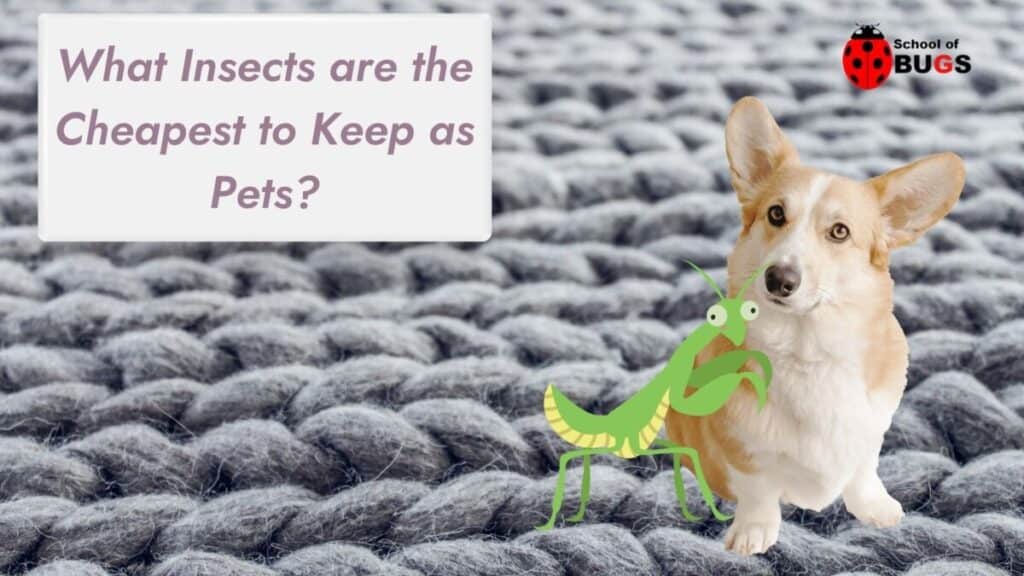
For those of us who love entomology (the study of insects) or those of us who want new and exciting pets, having an insect as a pet can be rewarding.
True, insect pets do not shower you with affection like cats or dogs, but for science aficionados, insects are fascinating to care for. So what are the cheapest insects to keep as pets?
When it comes to upkeep and dietary needs, crickets, cockroaches, and ants are some of the cheapest insects to have for pets.
These insects require very little in terms of food, and their space doesn’t have to be very large to maintain a good quality of life. A single praying mantis is also a cheap insect to keep as a pet.
At the end of the day, any pet you decide to purchase will be an added expense. But the insects on this list are some of the most affordable to keep as pets over other pets even.
In this guide, we will discuss cheap insects you can maintain easily and affordably. Read on to find out which bugs won’t break the bank.
Cockroaches (Non-Invasive)
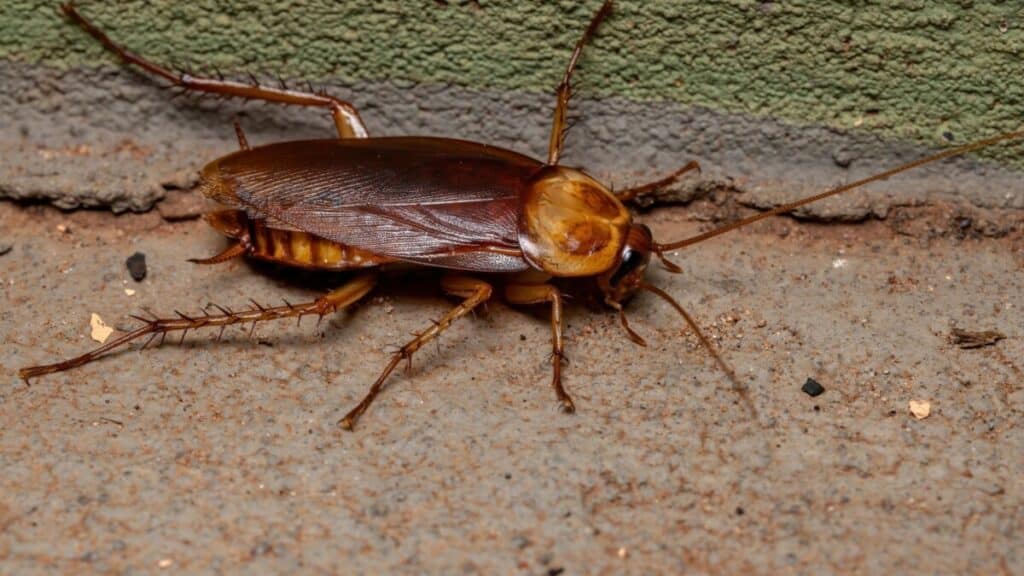
There are well over 4,000 known species of cockroaches in the world. And thankfully, the number of these species that infest homes or businesses is within the double digit threshold.
This means that there are numerous roaches you can choose to keep as pets. You will not have to worry about a non-invasive species escaping from its tank and multiplying rapidly behind your walls.
Although, some people do choose to keep American cockroaches or even German cockroaches as pets. I would make sure their home is well-secured before doing this.
Some of the species you can choose from are the Madagascar hissing cockroach, the Cuban cockroach, the Death’s Head cockroach, the Cave cockroach, the Lobster roach…the list goes on and on.
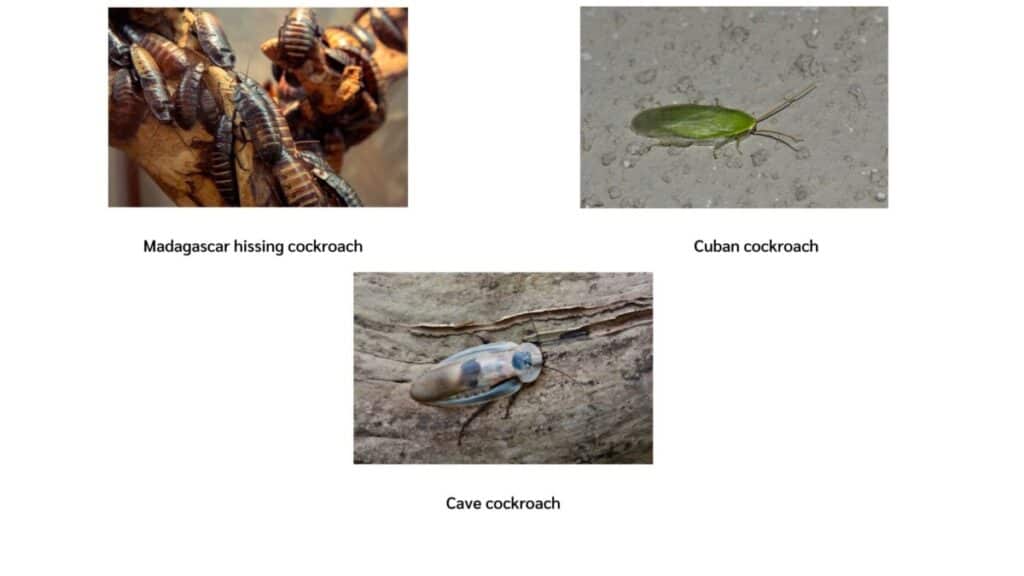
When it comes to care, pet cockroaches do best in a home known as a terrarium. This is like an aquarium, and in fact, can be made from an aquarium, but is designed to trap condensation and humidity inside.
But you do not want too much humidity if housing a colony of cockroaches as this can amplify reproduction and molting at a rapid rate.
In terms of food, this can differ slightly depending on the species. The Madagascar Hissing cockroach prefers to eat fruit, vegetables, grains, and even easy-to-digest scraps of meat if you want to foster reproduction with more than one.
If you live in a colder, mild climate, you will want to ensure the terrarium is above 75 degrees Fahrenheit at all times. This is fairly universal across any cockroach species.
It is also worth noting that some common cockroach pets, such as the Death’s Head cockroach, can fly. Make sure the terrarium is closed at all times with appropriate air slots for minor ventilation.
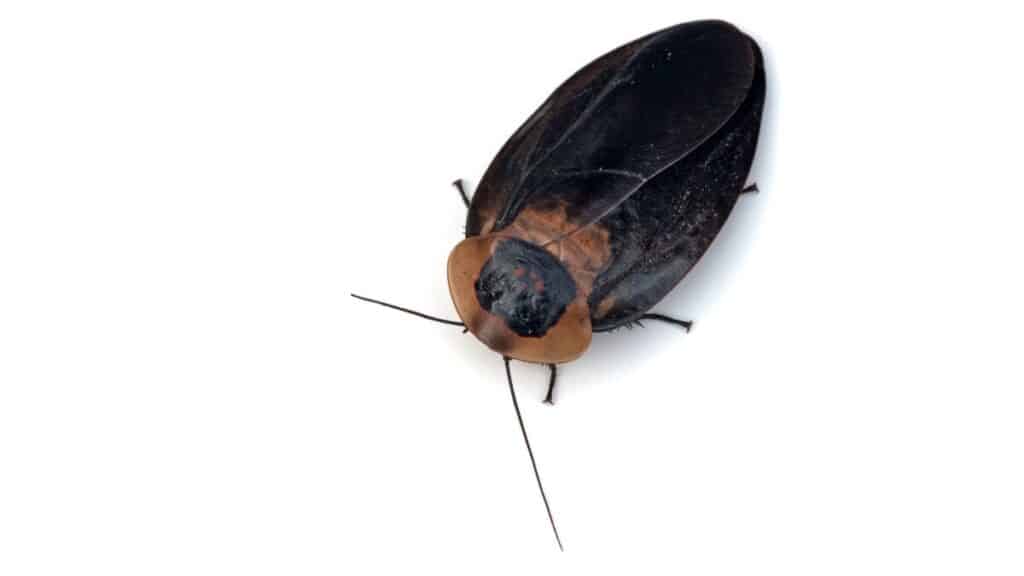
Praying Mantis
There are few insects as mysterious and intimidating as the praying mantis. This carnivorous, skilled hunter is feared by other insects, but the mantis’ ability to camouflage itself makes it a silent and stealth hunter.
So how do they hold up in captivity as pets? Well, the answer is complicated. You can certainly keep one of these insects as a pet, but this does rob the praying mantis of its ability to hunt. But as long as a proper type of food is steadily supplied, the insect will be fine.
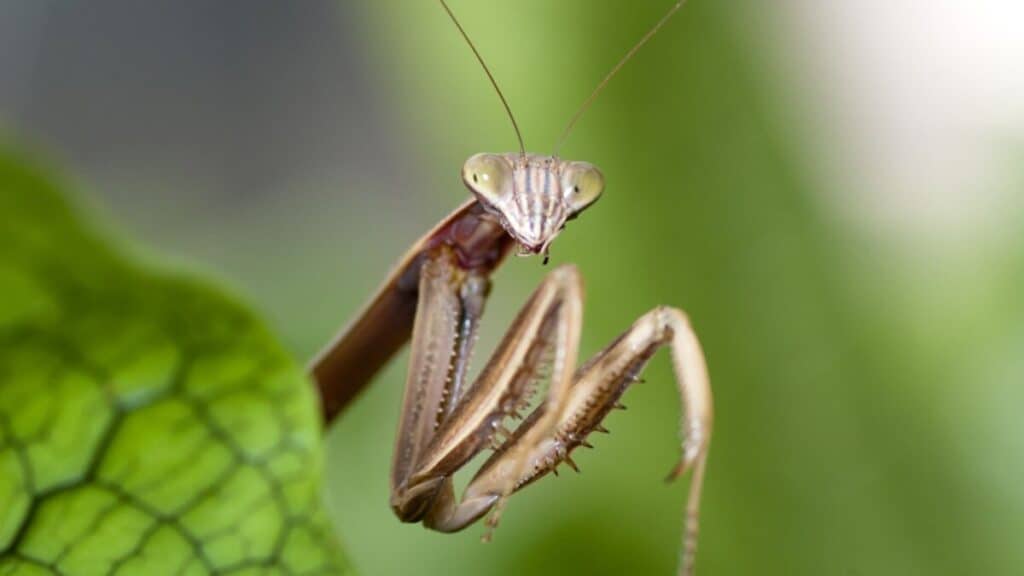
A praying mantis needs live prey as a food source. This means you will need to buy a steady supply of live crickets, flies, locusts, or cockroaches to meet this need.
1 or 2 of any of these insects, once per day is usually all a praying mantis will need.
Additionally, this insect needs a home that includes structures to climb on and perch to mimic its behavior in the wild.
Preferably, you will want to buy some small twigs that span from the floor of the terrarium to the top of the container. This insect will not be happy in captivity if it has nothing to climb and perch on.
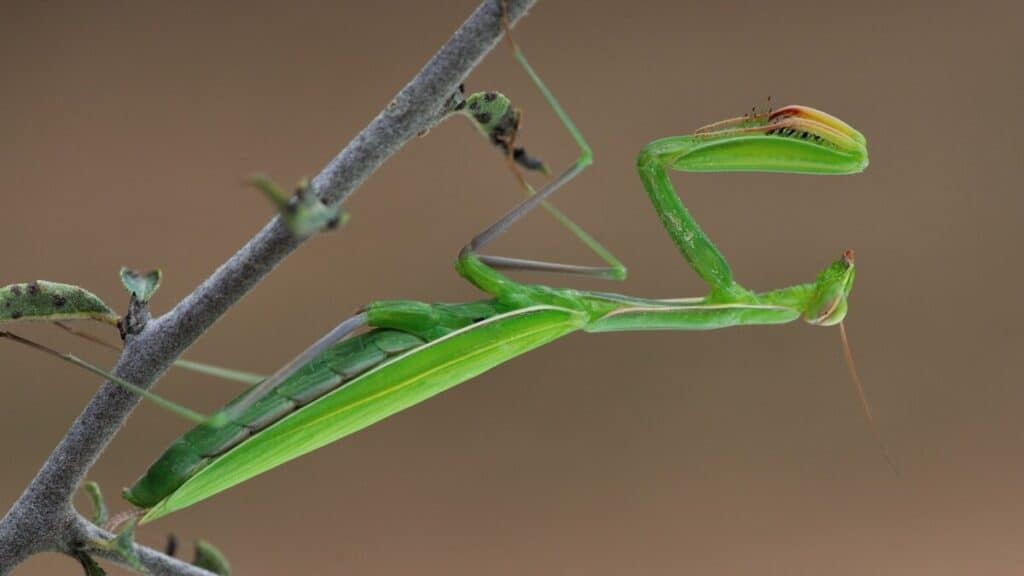
Moisture is also important, but leaving a drinking receptacle is not going to cut it. These insects like to drink water droplets from the ground or on the edges of leaves.
If your twig has leaves, you can spray these with water from a spray bottle. Otherwise, you can spray down the container once or twice a week to ensure adequate moisture retention.
Since this species doesn’t do well in the winter months, you should also make sure the container has a small heater.
A praying mantis is a fascinating insect to watch. Particularly when hunting their prey. Although they can bite and stick people with their feet, this isn’t a common occurrence.
Crickets
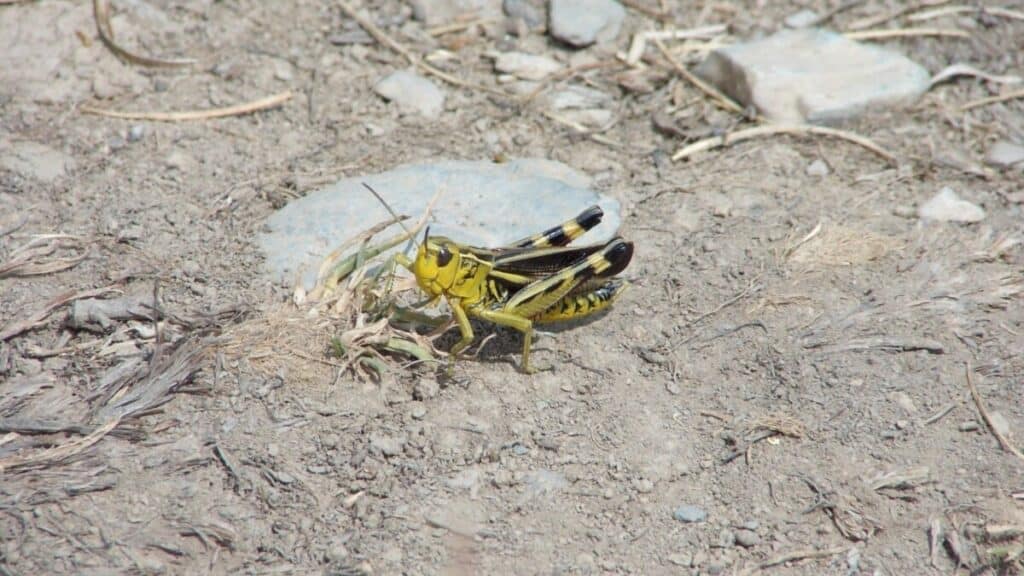
Speaking of crickets, these insects also make great pets. These insects can be kept in large quantities in a terrarium, or any medium-sized container that has proper ventilation.
Small and popular for their trademark chirping, crickets are perhaps one of the easiest insects to keep as pets.
These insects require very little maintenance, and the cost of food would likely be less than what you would pay for a hamster.
For their home, you should add some soil and leaves to mimic their natural environment as much as possible.
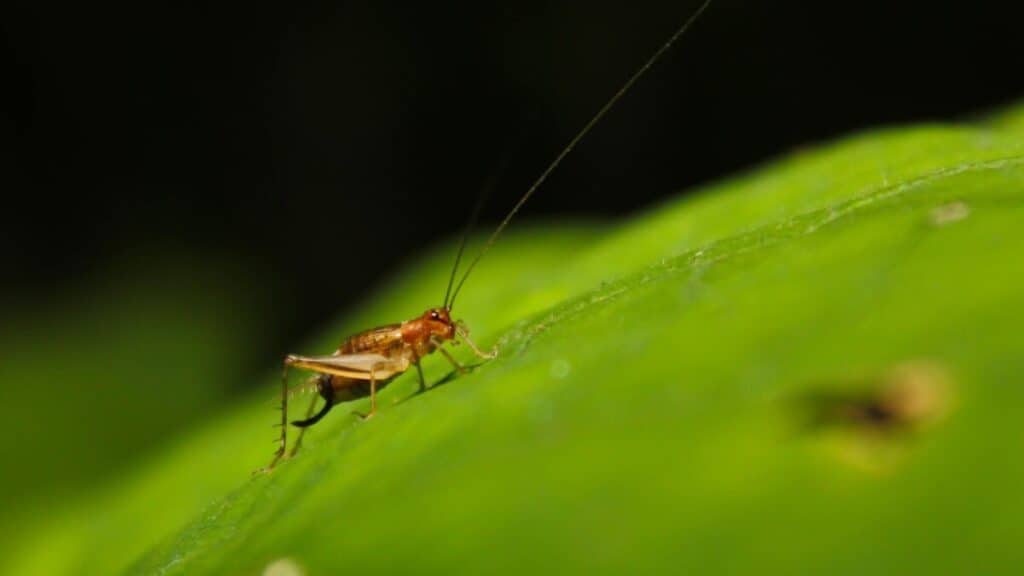
In terms of food, crickets will eat fruits, vegetables, grains, and protein-rich vegetation such as beans or tofu. Water needs are minimal, and a tiny seasoning bowl filled with water should be more than enough.
In terms of maintenance, keeping the terrarium or large receptacle of choice cleaned is the most important step. Keep spoiled food out of their home, and always remove any crickets that may have died.
Like any insects that live in colonies, watching the crickets go about their daily activities can be fascinating to behold.
Stick Insects
Stick insects are well-known for their unique and bizarre anatomy. This range of bugs has certain species that are classified as some of the longest insects on the planet.
Another great detail about these insects is that they are relatively cheap to keep as pets, granted you acquire the right species. The Indian stick insect is frequently cited as one of the easiest species to adapt to captivity.
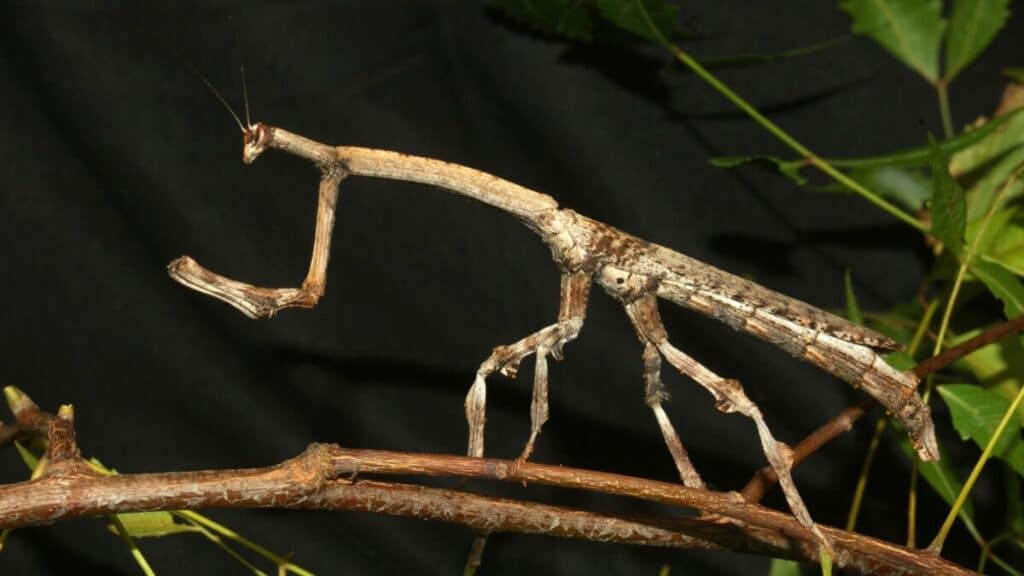
Stick insects resemble moving twigs or leaves, since this is part of their evolutionary biology to blend in with their natural environment.
This level of camouflage helps to keep the bugs hidden from predators, which also allows them to live out in the open if they so wish.
So what are these insects like as pets? As long as you keep a terrarium of one or two maximum stick insects, all should be well.
These bugs prefer to be left alone which is part of their solitary nature in the wild. So they make for interesting viewing in any room of your home.
Stick insects are herbivorous, and eat vegetation–but it’s important to remember that leaves are their preferred food of choice.
It’s important to ensure the leaves or plants with leaves you can plant in their tank are free from herbicides and pesticides. You can harvest leaves from unpopulated areas or buy plants that lack these chemicals.
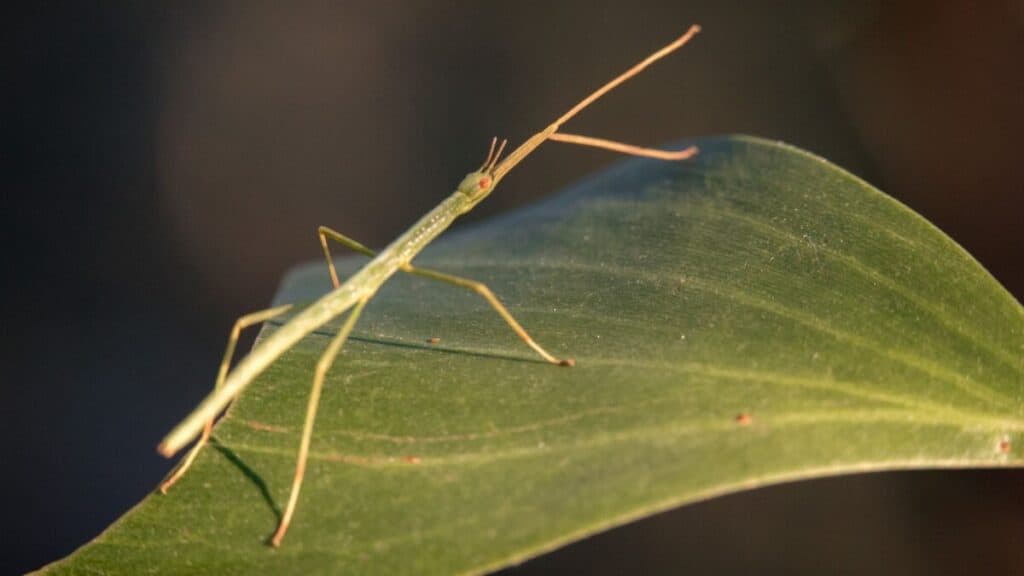
Some other important tips to keep in mind are shedding; these insects will shed their exoskeletons while suspended in the air.
Make sure their tank is at least 15-20 inches high and a corresponding perch or tall decorative ornament is in place so they can climb. Make sure their enclosure is well-ventilated as well.
What’s great about this insect pet is that you can gently hold them without fear of bites or stings. They love to crawl around and move, but you should avoid allowing the insects on your face just in case they get scared or alarmed.
Assassin Bugs
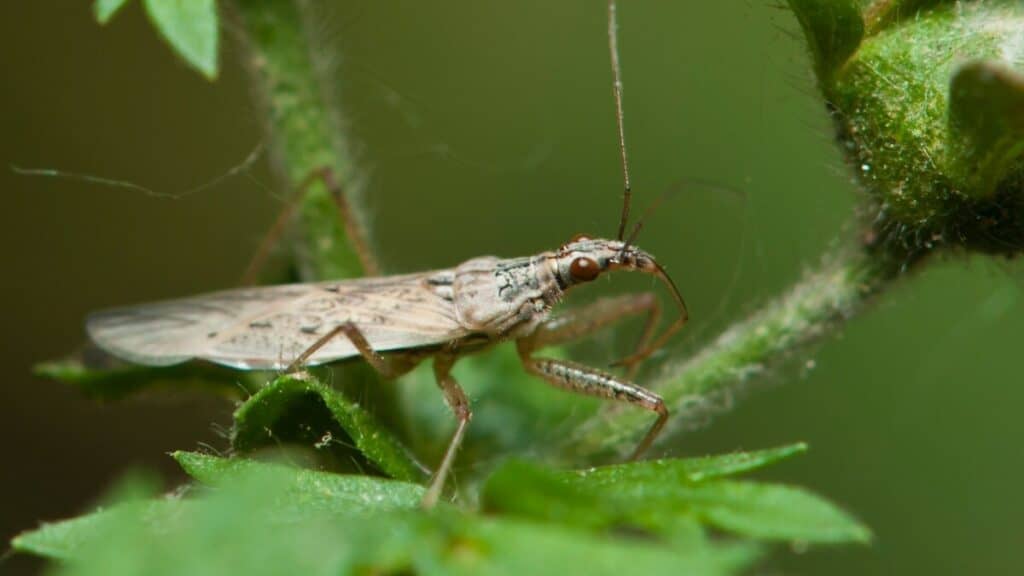
As long as you maintain a certain degree of caution, Assassin bugs can make great pets as well. This species is a predatory, carnivorous insect that helps regulate invasive insects in the wild by keeping their numbers from getting out of hand.
But the insects also pose problems to beneficial pollinators like bees, which they also eat.
But as a pet, these colorful bugs can be a delight to look at. Maintenance of Assassin bugs is also low to moderate.
You can keep them in a terrarium, but make sure you put a small box with an underneath opening since these bugs like to hide from view from time to time. Make sure the tank maintains moderate humidity and is ventilated.
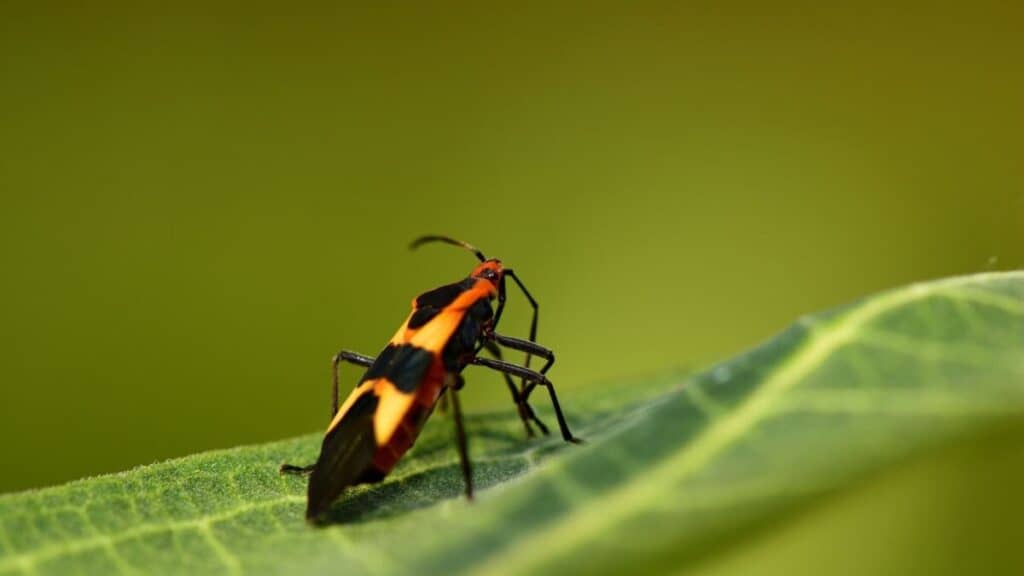
Crickets, small cockroaches, and worms are more than enough to meet their dietary needs. It is best to cycle these insects for food over three different days and then repeat the process to ensure the Assassin bug(s) have variety in their diet.
Keep in mind that these insects can and will bite if handled. So this is definitely a watch and observe type of insect pet.
I should also mention that their bite can be quite painful, and most likely would occur if being held since the insects will be alarmed.
How Big of a Space Do Insects Need as Pets?
It depends on the insect species. Most insects will do well in a medium-sized terrarium or a 10-gallon aquarium modified into a terrarium.
Conclusion
In closing, there are many affordable insects to keep as pets. This list represents only a select few of some of the most popular.
Humidity, food, moisture, and mild warmth are important things to keep in mind when keeping any of these insects as pets.
You could also consider keeping spiders or scorpions as well, which are obviously arachnid pets. There are many affordable options.
Alright, that’s it for this article, here are a few hand-selected articles that you might also find interesting reads:
3 Best Kind of Praying Mantis to Keep as PetsWhich Bugs Make the Best Pets? The Complete Guide
The Three Best Kinds of Spiders to Keep as Pets
Recent Posts
Tiny Black Bugs in Bathroom NO WINGS: What They Are and What to Do!
Finding tiny black bugs in your bathroom can be uncomfortable, to say the least. Especially if they are persistent, or they appear in very large numbers, which they often like to do. When it...
Tiny Black Bugs in Plant Soil - What Are They & What To Do About It
A short horror story: You get a new houseplant. You do your best to take care of it. You’ve ensured that it has the right soil, the right amount of sun, it gets enough water. And then one day, you...

